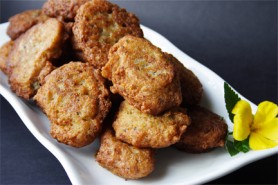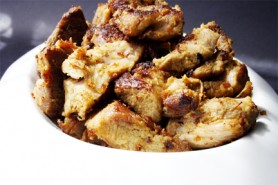Tastes Like home
Hi Everyone,
Beyond the shores of the Caribbean, when the term “Caribbean cuisine” is used it is often used to refer to the slices of mangoes adorning a plate, or a wedge of pineapple on the rim of a cocktail glass. However, we are so much more than a garnish. We are as diverse as we are united and we each speak with our own voice.
United by a complex history, the Caribbean is made up of four parts – the English-speaking Caribbean, the Dutch Caribbean, the Spanish Caribbean and the French Caribbean. While there are many similarities in the ingredients we use, some techniques and methods of preparation are as varied as the languages spoken. Some territories are more diverse than others in their ethnic make-up and that gets reflected and represented in the cuisine of that particular country. For example, Guyana, Suriname, Trinidad & Tobago and Jamaica are made up of various ethnicities and cultures; in many ways these countries can be considered the parents of what is now termed fusion cuisine.

On the other hand, there are many countries within the varied-language Caribbean that are made up of predominantly one or two ethnicities, therefore, the cuisine in those countries is more easily identifiable when it comes to influence. So is the case of Haiti. The majority of Haiti’s population is of African descent, the island was first colonised by the Spanish and then the French; Haiti went on to become the first post-colonial independent black-led nation in the world. The Haitian cuisine is therefore a uniquely created cuisine that displays various nuances of Spanish, French and African cooking through its ingredients and methods of preparation.
As a food writer, there is so much for me to explore when it comes to Caribbean food. There is a hunger in my heart to discover the food of our region and to share it, not just with the world but especially with my fellow Caribbean people. Though we love our region, often it is not possible to travel to each Caribbean territory and find out for ourselves the bounty that we have to offer.
One of my friends, Jessica, is married to a Haitian-American. A man who is justly proud of his heritage, Robert has been introducing Jessica to the many food ways of his native Haiti. The last time I saw her, she extolled the delights of Griot (Haitian Fried Pork) and Accra (a fritter made of Malanga aka as Tannia and black-eye peas). I was so excited and worked up about learning more about these dishes and trying them that I could not wait to get home and do some research.

Gathering the ingredients was easy. The only thing I was not familiar with was Malanga. Jessica told me that when they had made the dish in Barbados, they substituted with eddoes, however, after some research I realized that Malanga was the Spanish name for Tannia, which I knew we have in Barbados. (See the Spanish influence in naming the ingredients in what is often referred to as French-Creole Haiti?)
I set about making the marinade for the pork; it called for one cup of sour orange juice, (not to be confused with orange juice that has gone bad). It is the juice of a particular variety of orange. Instead, I used two-thirds cup of orange juice and one-third cup of lemon juice, combined; it gave the requisite “sour orange juice”. For the Griot to fully develop the flavour, it should be marinated overnight. I was a little concerned about the long time that the meat (boneless pork shoulder) would be spending in the citrus but I tossed those fears aside and put my trust in the recipe I was working with.
One of the things that you should know about Caribbean food is that it takes time to prepare and cook but it is always worth it. After an overnight marinade, the meat is then cooked twice! First it is boiled with the marinade and added water to fully cook the meat and then it is pan fried to brown and crust up the outside while the interior remains tender.
The ingredients for the Accra are made into a batter and fried. Oh gosh, the outside is brown and crusty, the inside, tender. I was totally surprised by the texture and tenderness of the Accra as I had never cooked Tannia (Malanga) that way before. Unlike some fritters, which have to spend a long time frying, the Accra cooked up quickly. The important thing is to get the temperature of the oil just right.
The meal was a triumph! I served it with red kidney beans and rice, boiled ripe plantains and a pickle of carrots and cucumber. My tasters kept asking for the seasoning I used with the pork, when I told them, they kept saying that there was something else there that they could not place their finger on, so to speak. I thought of the fifth taste – Umami (that specialized taste that recognizes among many other things, the main flavouring component of meat).
I’m thrilled to be discovering more Caribbean food and so should you!
Cynthia
tasteslikehome@gmail.com
www.tasteslikehome.org
Haitian Griot
Ingredients
½ cup chopped shallots
½ cup chopped onions
Black pepper to taste
Minced hot pepper to taste
1 teaspoon chopped fresh thyme
1/3 cup fresh lemon juice
2/3 cup fresh orange juice
3 teaspoons salt
3 lbs boneless pork shoulder cut into large cubes
2 cups water
3 tablespoons oil
Method
1. Add the shallots, onions, black pepper, thyme, hot pepper, lemon and orange juice and salt to a bowl or cup and stir mix thoroughly.
2. Put the pork into a large zip plastic bag. Pour the marinade into the bag, squeeze out the excess air, close the bag and with your hand and mix the marinade and meat together. Place the bag on a plate and refrigerate. Marinate overnight or for at least 6 hours.
3. Remove the marinated pork and bring up to room temperature.
4. Pour the content of the bag – meat and marinade, along with 2 cups of water into a pressure cooker or large pot and stir to mix. If using a pressure cooker, close pressure cook for 8 – 10 minutes (time begins from the first whistle). If using a regular pot, cover, bring to a boil and cook for 45 minutes. The liquid should dry out. If it isn’t at this stage then let it continue to boil until it has or open the pressure cooker and let it boil until the liquid is gone.
5. Heat oil in pan until very hot.
6. Add pork to pan and let fry (sauté), turning a few times at 1-minute intervals until the pork is brown and the outside crusty.

